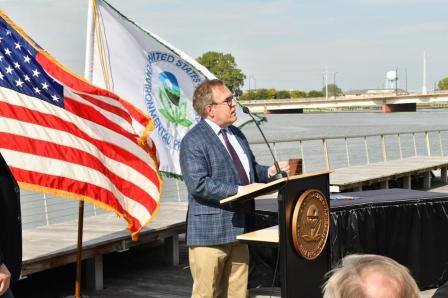By Brynna Sentel
TheStatehouseFile.com
INDIANAPOLIS—Ernie Shearer and his wife saw their plans of retiring and downsizing their lives change before their eyes when they adopted their four grandchildren who had been removed from their opioid-addicted son and his spouse.
Shearer shared the health and behavioral problems the children have experienced as he testified Wednesday before the Interim Study Committee on Public Health, Behavioral Health, and Human Services. He told his family’s story to urge lawmakers to provide adoptive parents with adequate subsidies to ease the transition of taking care of children with health and other issues.
“Our whole life got turned upside down,†Shearer said. “It wasn’t a hard decision to make. Before we even had the chance to make the decision we had it explained to us that if we didn’t take the children they would be split up and we probably wouldn’t see them again.â€
The committee heard from witnesses who said that Indiana provides less support for adoptive families than other states.
“We should be doing everything possible to try to encourage adoptions and not making it more difficult,†Sen. David Niezgodski, D-South Bend, said. “These children have needs that need to be met, and it is our obligation to meet those needs.â€
Adoptive parents have said that the Department of Child Services assesses their income and expenditures before determining what, if any, subsidies they should receive to care for children with health or behavior issues. They don’t consider the actual cost of caring for the children.
“Ordinary and special needs of a child is what DCS needs to focus on, not focusing on what the parents’ income is, not what they have in retirement,†said Kristi Cundiff, the founder, and CEO of Indiana Foster and Adoptive Parents Resources and Advocacy Group.
Cundiff characterized ordinary needs as being food, clothing, shelter, but children with a special need might need to be going to a psychiatrist. Therapy sessions, doctor visits, and special medications are not factored into the amount these parents should receive.
Niezgodski, who authored a bill in the prior legislative session, told the committee that subsidies after adoption should be at least 50% of what they were when the child was in foster care, adding that it could be as high as 100% of foster care subsidies.
Some of the committee members agreed that it would be less costly to provide adopting parents with more in subsidies than to continue to care for the child through the foster system.
“When a foster parent decides to adopt children they are doing it because they love those children obviously they want to take them in their homes and provide good lives for them,†Niezgodski said. “I believe that when loving parents are wanting to adopt that the needs of these children do not change and the natural ability of those parents don’t change.â€
In the negotiation process of adopting a child through the foster care system, some parents accept lower subsidies than they believe is necessary out of fear of losing the child forever, or simply out of confusion according to several testimonies.
The committee passed a recommendation to enact legislation in the 2020 session to streamline and simplify the adoption of foster children and address the disparity between foster and adoption subsidies based on the best interest of the child.
FOOTNOTE: Brynna Sentel is a reporter for TheStatehouseFile.com, a news website powered by Franklin College journalism students.




